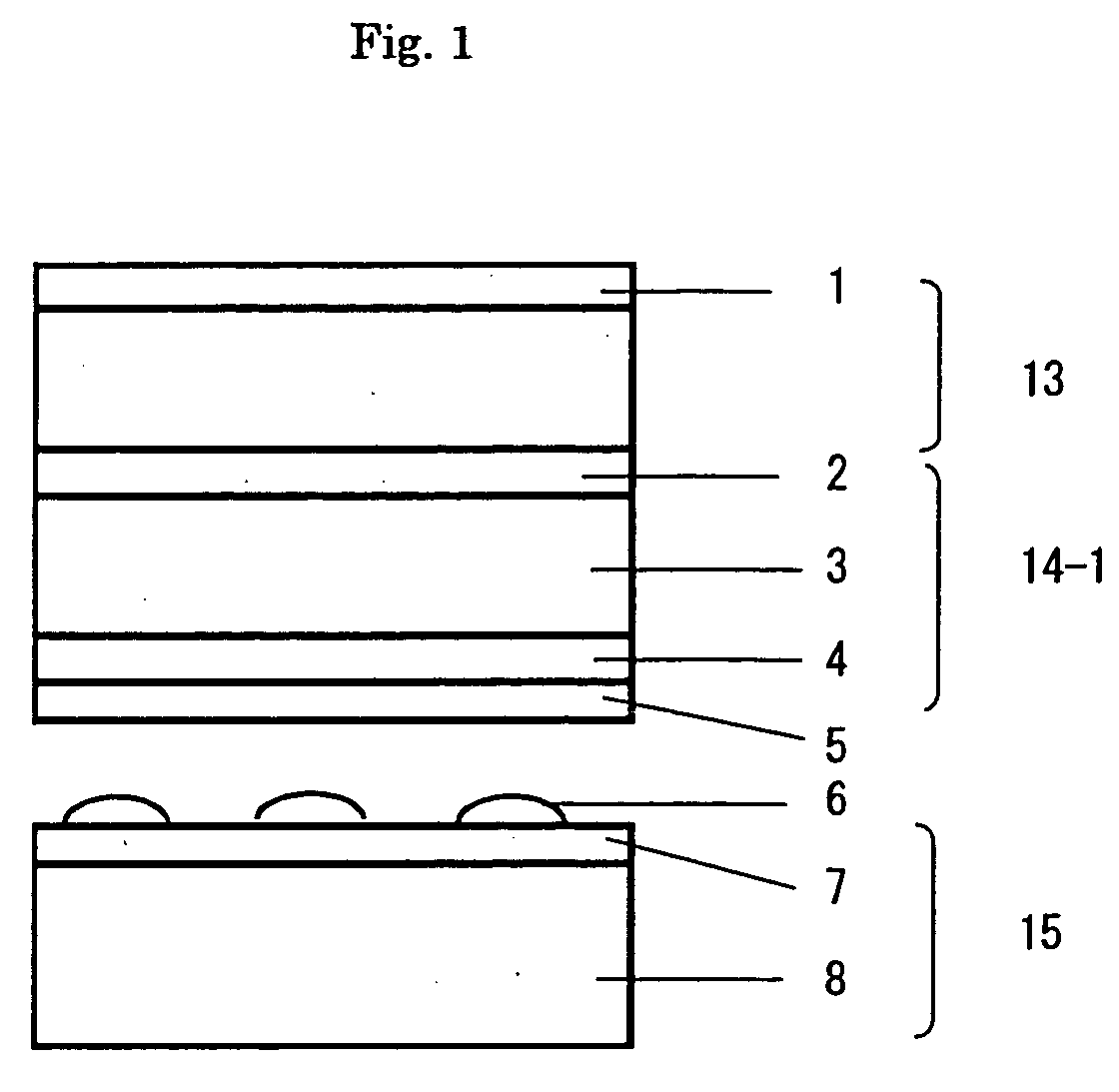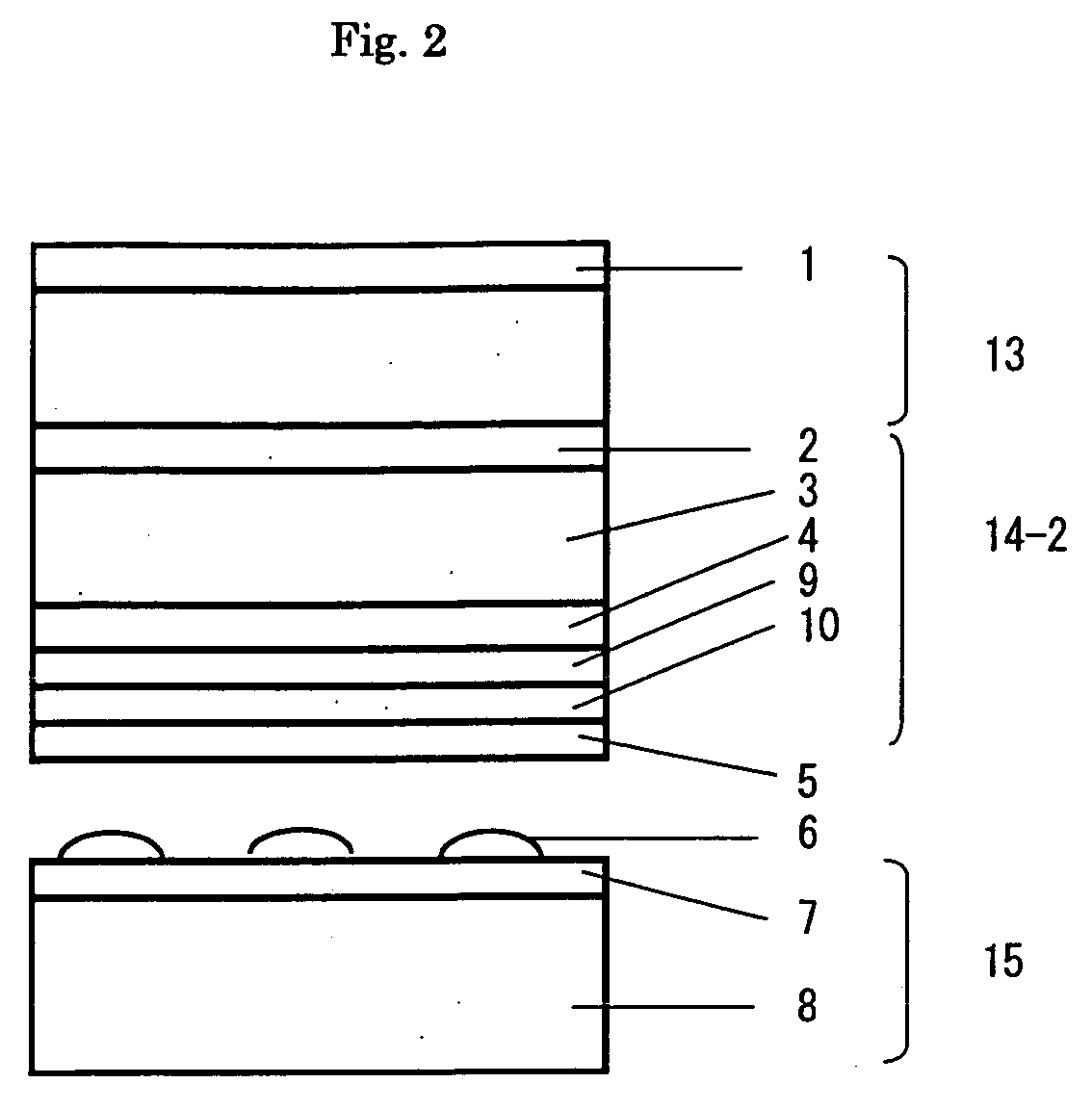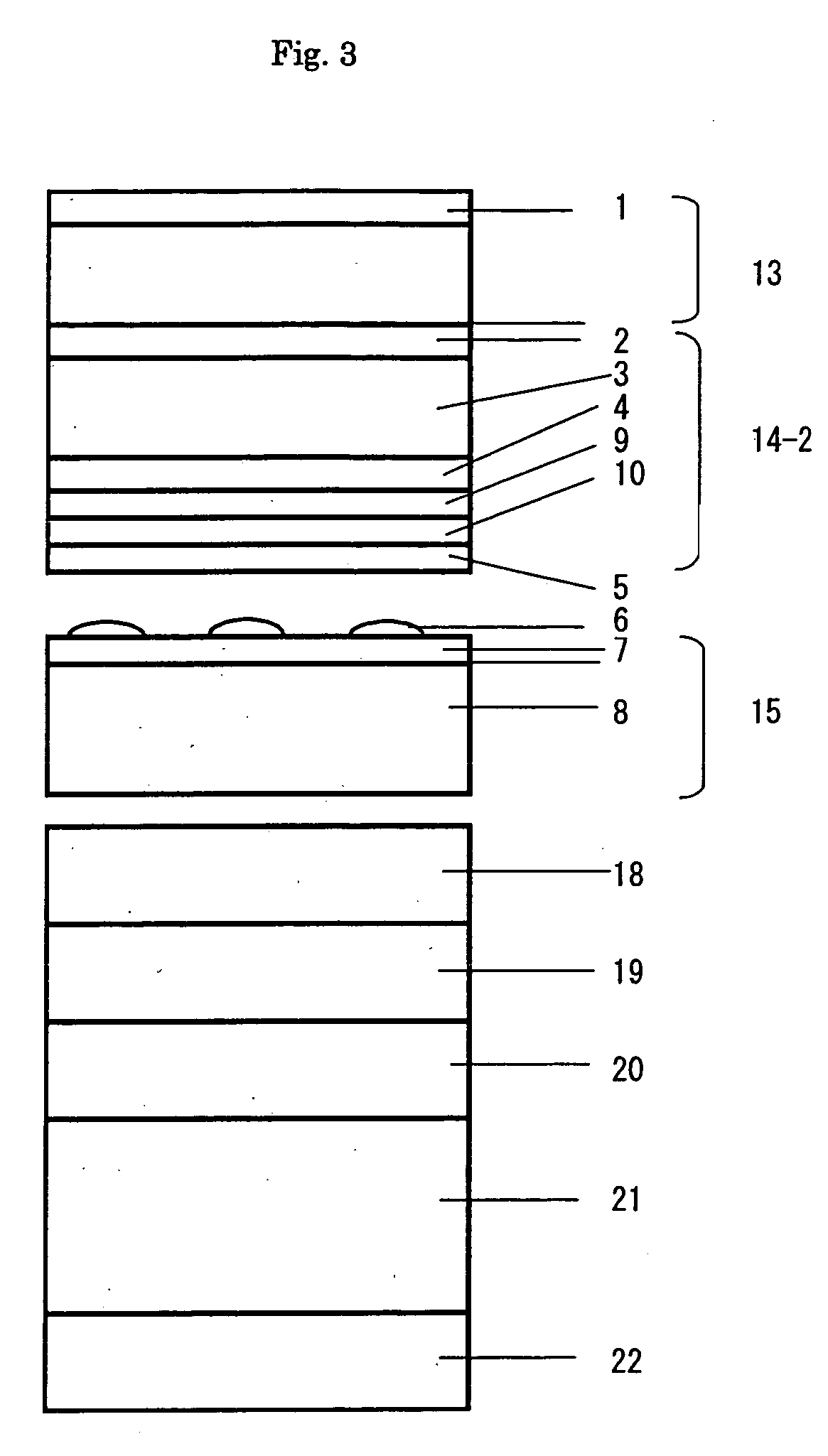Transparent conductive laminate, touch panel and liquid crystal display unit with touch panel
a technology of transparent conductive laminate and touch panel, which is applied in the direction of thin material processing, instruments, chemistry apparatus and processes, etc., can solve the problems of insufficient adhesion reliability, difficult to distinguish display, and difficulty in removing liquid crystal display light by 14 wavelength retardation film, etc., to reduce the visibility of liquid crystal display, prevent scratches of polymer film, and enhance cohesion
- Summary
- Abstract
- Description
- Claims
- Application Information
AI Technical Summary
Benefits of technology
Problems solved by technology
Method used
Image
Examples
example 2
[0168] An approximately 2 μm-thick light-scattering layer (2) was formed on one side of the retardation film (3) of Example 1 in the same manner as Example 1. The haze value of the light-scattering layer alone was 0.5%. An approximately 2 μm-thick cured resin layer (4) was then formed on the side of the retardation film (3) opposite to the side on which the light-scattering layer was formed, in the same manner as Example 1.
[0169] Next, tetrabutoxy titanate (“B-4” by Nihon Soda) was diluted with a mixed solvent of ligroin (special grade product by Wako Pure Chemical Industries) and butanol (special grade product by Wako Pure Chemical Industries) to prepare coating solution D.
[0170]γ-Glycidoxypropyltrimethoxysilane (“KBM403” by Shin-Etsu Chemical Co., Ltd.) and methyltrimethoxysilane (“KBM13” by Shin-Etsu Chemical Co., Ltd.) were mixed in a molar ratio of 1:1 and hydrolysis of the silanes was carried out by a publicly-known method with aqueous acetic acid (pH=3.0) to obtain silane h...
example 4
[0181] Coating solution G was prepared comprising 100 parts by weight of urethane acrylate, 7 parts by weight of a photoinitiator (IRGACURE 184, product of Ciba-Geigy), 135 parts by weight of 1-methoxy-2-propanol as a diluent and 135 parts by weight of isopropanol. To the coating solution G there were then added silicone crosslinked fine particles with a mean diameter of about 3 μm (TOSPEARL 130, product of GE-Toshiba Silicones) as fine particles A, at 0.2 part by weight to 100 parts by weight of the resin component, to obtain coating solution H. Separately, there were added to the coating solution G the silicone crosslinked fine particles with a mean particle size of about 3 μm (TOSPEARL 130, product of GE-Toshiba Silicones) as fine particles A at 0.7 part by weight to 100 parts by weight of the resin component, and MgF2 superfine particles as superfine particles B at 5 parts by weight to 100 parts by weight of the resin component, to obtain coating solution I.
[0182] Coating solut...
PUM
| Property | Measurement | Unit |
|---|---|---|
| Tg | aaaaa | aaaaa |
| Tg | aaaaa | aaaaa |
| Tg | aaaaa | aaaaa |
Abstract
Description
Claims
Application Information
 Login to View More
Login to View More - R&D
- Intellectual Property
- Life Sciences
- Materials
- Tech Scout
- Unparalleled Data Quality
- Higher Quality Content
- 60% Fewer Hallucinations
Browse by: Latest US Patents, China's latest patents, Technical Efficacy Thesaurus, Application Domain, Technology Topic, Popular Technical Reports.
© 2025 PatSnap. All rights reserved.Legal|Privacy policy|Modern Slavery Act Transparency Statement|Sitemap|About US| Contact US: help@patsnap.com



